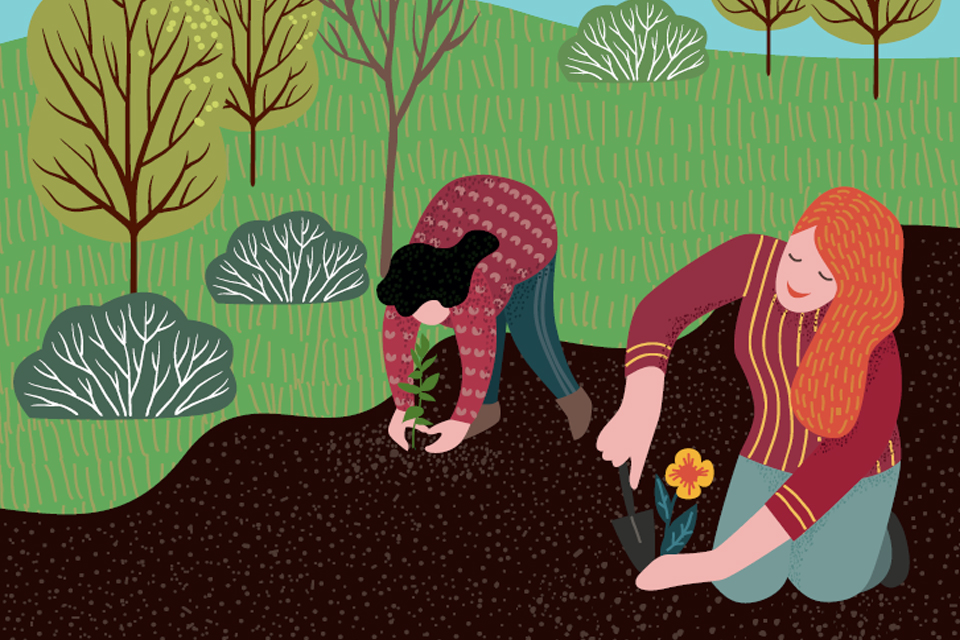Buddha nature (sometimes called Buddha Dhatu) is one of the most important teachings in the Mahāyāna tradition of Buddhism — and it’s one that resonates as much in the 21st century as it did thousands of years ago.
Buddha nature is the first of Buddhism’s Three Gems (or Three Jewels), and understanding Buddha nature is one of the simple yet profound and essential steps on the path to enlightenment (the other two gems are dharma and sangha). Together, the Three Gems form a statement made by those wanting to express their newfound or ongoing faith in Buddhism:
I take refuge in the Buddha
I take refuge in the dharma
I take refuge in the sangha
While the word “dharma” has many meanings, in the context of the Three Gems it means staying engaged with and following the Buddha’s teachings. “Sangha” refers to the community of likeminded people with whom we surround ourselves when walking the spiritual path.
Awakening from within
The first gem, meanwhile, asks not only that we take refuge in the Buddha, but also that we recognise our own Buddha nature (or Buddhahood). While some think of the Buddha (born Siddhārta Gautama more than 2500 years ago) as a kind of god, the Buddha himself maintained that he was an ordinary man who had sought and walked the path to enlightenment. He taught that the potential for awakening belongs to each of us, if we can just peel back the layers of conditioning that conceal our true nature. These layers include the three poisons (greed, hatred and delusion) and the five hindrances (sensual desire, ill will, sloth, restlessness and doubt).
After spending years trying almost everything else, the Buddha finally achieved enlightenment and became a Buddha while sitting in meditation under the Bodhi tree, where he came up against the poisons and hindrances of his own mind. In doing so, he showed what’s possible for the rest of us. “All beings are Buddhas, but obscured by incidental stains. When those have been removed, there is Buddhahood,” wrote the third Karmapa Lama, Rangjun Dorje, in the 14th century.
Watering the seed of Buddhahood
The Sanskrit word tathāgathagarbha, which translates to “womb” or “seed of the Buddhas”, is often associated with the concept of Buddha nature. It points to the idea that within each of us is the seed of Buddhahood, waiting to be watered through our dedication to walking the spiritual path.
Sometimes the lotus flower is used as a symbol of Buddha nature because of the way in which the plant must struggle through the mud before emerging and expressing itself as a beautiful flower — the essence of which was contained in the plant all along. The Buddhist concept is not that we need to become enlightened — but rather that we must “wake up” to the realisation that we are already enlightened. Thich Nhat Hanh explains, with his trademark poeticism, that “anything that can help wake you up has Buddha nature”, and gives the example of a bird calling in the wild. We could also think of Buddha nature as what exists beneath or behind the mind: a place of no-mind sometimes referred to as the “luminous mind”.
“Our fundamental nature of mind is a luminous expanse of awareness that is beyond all conceptual fabrication and completely free from the movement of thoughts,” writes the Tibetan teacher Dzogchen Ponlop Rinpoche. “It is the union of emptiness and clarity, of space and radiant awareness that is endowed with supreme and immeasurable qualities.
From this basic nature of emptiness everything is expressed; from this everything arises and manifests.” The teaching of Buddha nature can help us realise that we don’t need to search outside of ourselves for validation or empowerment, and that we already contain everything we need — that we are, in fact, lit from within.
Want to learn more about being grounded? Visit our grounded archive page.




